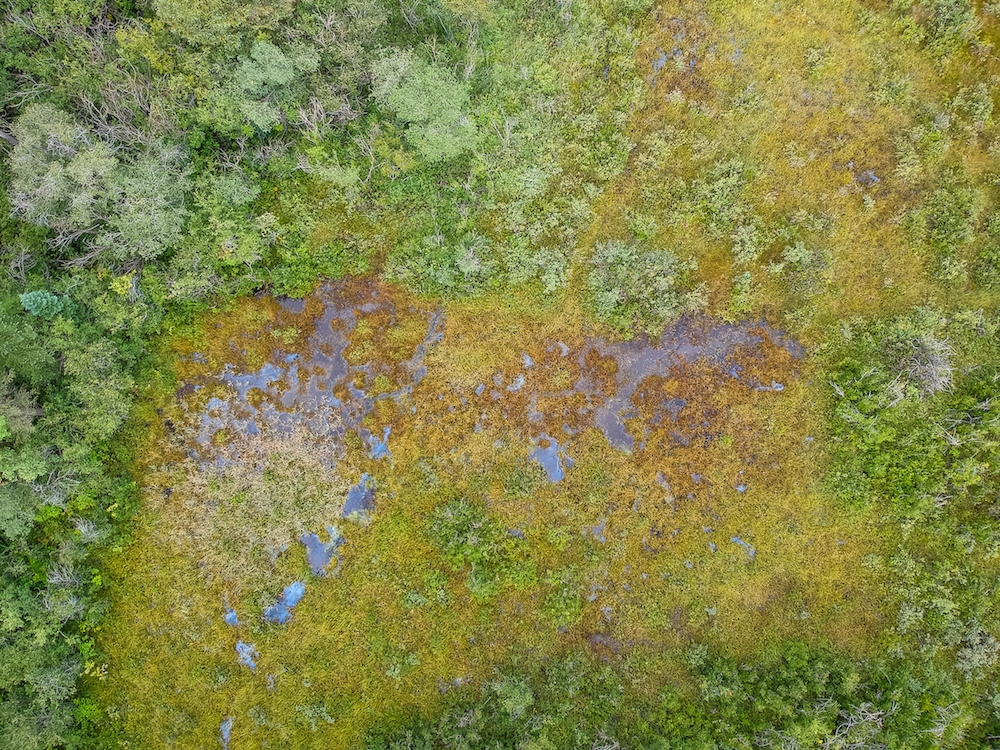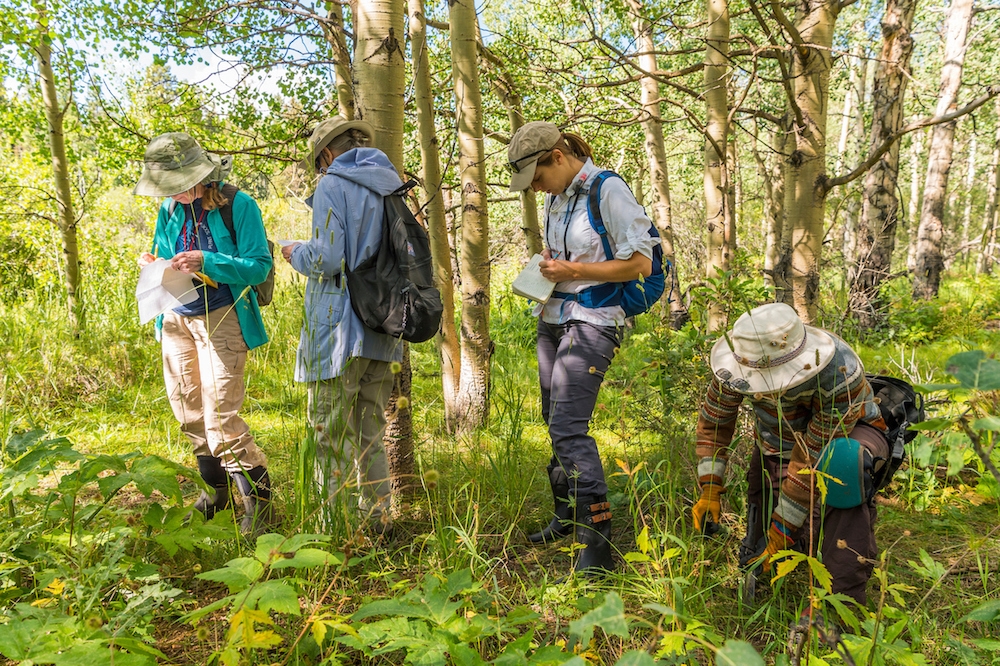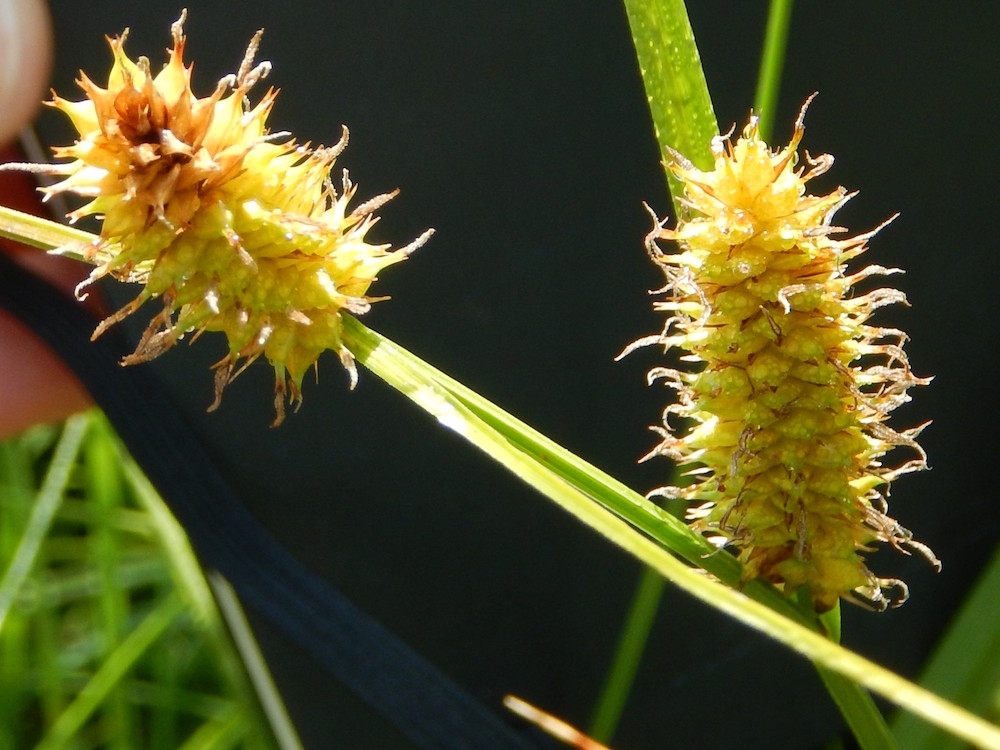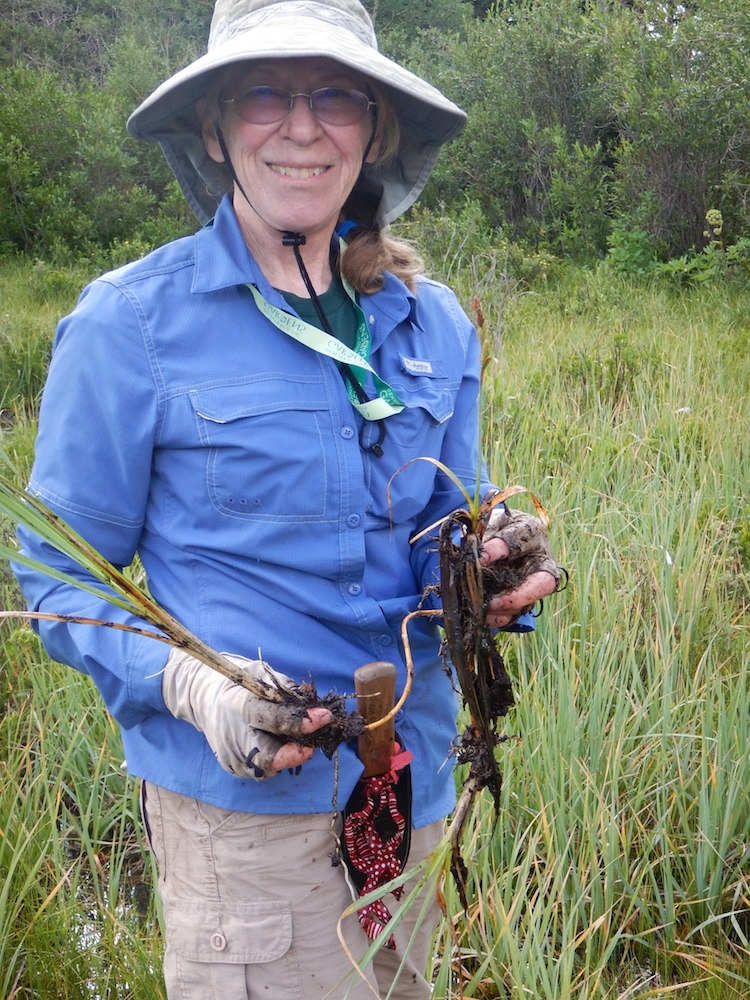Sedges have edges . . .
. . . and extreme ecological importance in high-elevation wetlands.
It’s likely that at some point, you have been out for a stroll and admired a pretty grass fanning gently in the wind…or maybe it was a sedge? Or a rush? It’s also likely that to solve this puzzle you looked musingly to the sky and recited to yourself: sedges have edges, rushes are round, grasses have knees that bend to the ground. And voila! You were botanizing, if only for a second, as you made your way in nature.
While the first and fundamental step of botanizing is naming what plant you have, the next is understanding how it shapes the ecosystem in which it occurs. With sedges, many of us know about the useful diagnostic clue of the angular stem. But less well known is that sedges of the genus Carex comprise one of the largest plant groups in the world, with more than 2,000 species occurring worldwide. Many sedges have expansive circumboreal distributions spanning from Russia, to the Great Lakes, to Canada.
Carex is also the largest genus of plants in Colorado, containing over 100 species. While sedges may not be showy, they are ecological superstars, forming the botanical backbone of one the state’s most important habitat types, the wetland. There are many types of wetlands including marshes, riparian corridors along creeks and streams and peatlands such as bogs and fens. Such habitats are oases in our otherwise semi-arid region, supporting a high diversity of plants and animals, many of which do not occur outside of their wetland refugia.
Importantly, wetlands cover only 3-6 percent of Earth’s land area, and they are increasingly threatened by land use change, invasive species, and altered temperature and precipitation regimes. Our hope of dynamically managing wetlands under future conditions rests upon knowing which species occur in the here and now, under contemporary conditions.
To contribute to this effort, a crew of staff and volunteers from the Gardens’ Research & Conservation Department made plant collections (to be curated for decades to come in our herbarium) at a high-elevation fen in Gilpin County, CO. From above, the fen glitters like a bright jewel, with a lush carpet of lime-green sedges punctuated by sun-lit pools of water.
Take flight over the fen yourself! The abundant sedges, along with water-loving wildflowers like grass of Parnassus (Parnassia palustris) and elephant’s head (Pedicularis groenlandica), root themselves into deep, peaty substrates that take thousands of years to accumulate. (The slow work of peat formation makes fens extremely hard to restore and much of our team worked from the upland sidelines during collection.)
While some sedges grow in drier habitats, they often prefer or are restricted to wetlands. Because of this affinity, sedges speak volumes about wetland type and health. For example, “obligate wetland” species are just that—obligated to grow in wetlands—so their presence helps to define wetland boundaries and suggests a relatively intact hydrologic regime.
Our survey of the Gilpin County fen turned up 11 species of Carex, five of which are obligate to wetlands and four of which highly prefer them (these being “facultative wetland” species). The presence of another beautiful sedge, Eriophorum angustifolium, told tale of the ecological integrity of the fen. This species, sometimes called cottongrass for its fluffy shock of snow-white seed heads, is dependent on relatively pristine wetland habitat to survive. We were happy to include it on our plant list of 160 species found at the site this year!
In closing, let’s return to the first and fundamental step of botanizing: naming what you have. Sedges are an extremely difficult group to get to know. Sedges having edges is the tip of the diagnostic iceberg (with even this well-known ID hack having many exceptions), and taxonomically defining this one slice of the botanical menagerie is a feat. Luckily for folks who botanize in Colorado, Dr. Janet Wingate has just made the world of sedges more accessible with her illustrated publication titled Sedges of Colorado. Check it out and make room for it in your backpack on your next hike!
Gallery




Add new comment